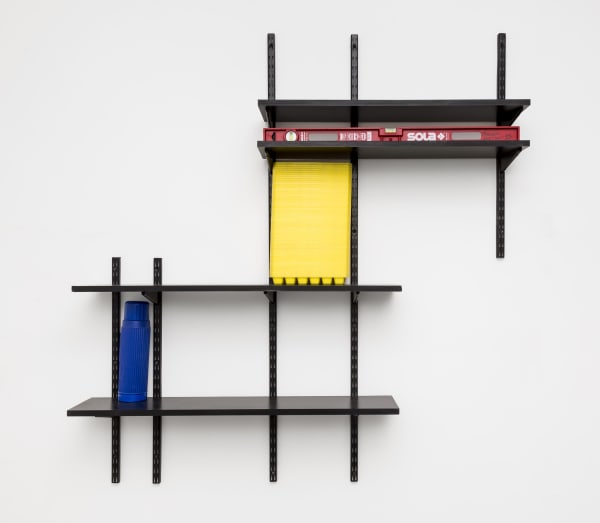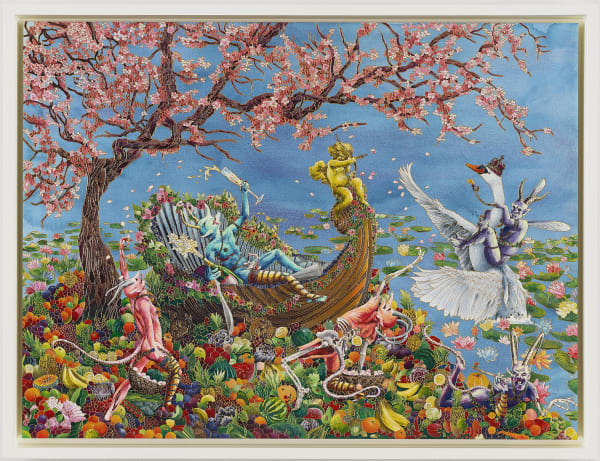Guillermo Kuitca
Buenos Aires, Argentina, 1961
Guillermo Kuitca is an exception in the art world. In 1974, when he was only thirteen years old, he had his first exhibition, and from that moment on, he never stopped looking at and understanding the world through painting. For him, his work is a constant play between intuition and reflection. Encouraged by his parents, he studied fine arts in Buenos Aires for ten years, but then he expanded his artistic techniques and expressions. Theater, dance, cinema, architecture, and also philosophy became part of his work.
In 1980, he met Pina Bausch's theater, and that encounter changed the focus and content of his art. The visit of the dancer who revolutionized modern dance to the city of Buenos Aires was central. Her performance had a great impact on Kuitca, and at nineteen, he traveled to Germany to work with her. Back in Argentina, he experimented with theater. "Nadie Olvida Nada" emerged first in that language and then as paintings depicting human silhouettes in various spaces overlooking nothingness. For him, this period is a moment of transition in which he seeks to abandon the human figure to find power in objects. A thrown chair or a stripped bed, elements that are easy to represent and that can be the base of many of the most important human experiences: sex, sleep, birth, or death. As he once said, the bed "is that whole arc of things, and at the same time, if it were none of those, it would be a platform that is a rectangle and four little lines".
The architectural plans are a recurrent figure representing the typical Argentine middle-class family, but which in his work becomes dramatic when associated with syringes, bones, or skin stains. A plan can represent a home, but also a house infected with AIDS. At this time, the subject is replaced by a domestic element: "a thrown chair is much stronger than a thrown figure, a messy room is much stronger than a character fighting somebody else," says Kuitca. And again, in the 1990s, paintings become more distant, a zoom-out that takes us away from the human scale to make it increasingly strange. If the plan first replaced the human figure, it will later be replaced by maps of cities, maps that reinvent territories. Sometimes they are reminiscent of tourist maps, other times they burst in with remote conflicts such as Afghanistan, a world that exists beyond his work, but it is capable of transforming it.
Despite his international transcendence, Kuitca is skeptical about certain aspects of his work and career; but he has no doubts about his teaching work. His last name is a synonym for a grant. Dozens of Argentine artists have been trained under his program. Perhaps, in the beginning, it was a way to preserve his bonds with Buenos Aires, but as the years went by, it became an institution with its own seal. Far from the residencies that, as he once expressed, became a form of tourism and social anxiety to know who participated, Kuitca promotes a way of working that generates a different structure: he is not the star who enters unexpectedly to make brief interventions and leave a trail of genius and mystery, but the daily exchanges with those he works has turned him into a familiar and recurrent presence. That space was and continues to be an educational space and where he grows as an artist.
-

The return to the human shape
By Juliana Fontalva October 13, 2022The return to the human shape I would say that my pictures have space. That is in the expression of making clear the obscure...Read more -

The past recalled
By Rodrigo Alonso February 4, 2022As we know, contemporary art does not follow specific construction rules, nor does it ascribe to precise disciplines or materialities. As a phenomenon that embodies...Read more -

Spaces of Delirium in the Balanz Collection
By Victoria Giraudo June 1, 2021One of the first things that caught my attention, when I personally toured the Balanz Collection of contemporary art, was a piece discordant with the...Read more











